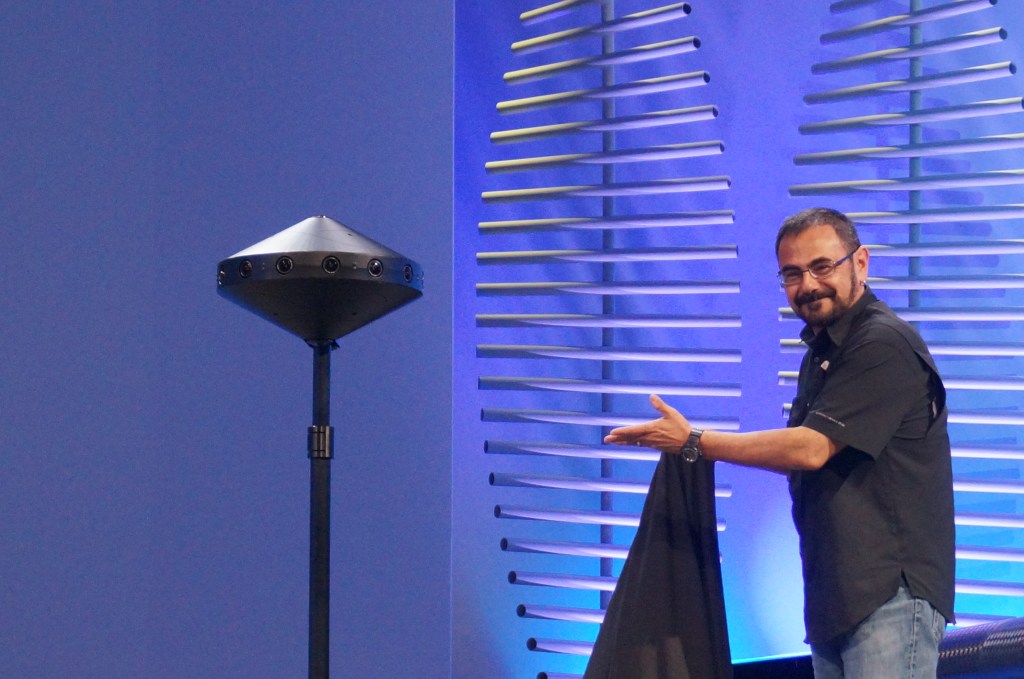It’s not every day you can witness an entire class of software making the transition from specialized, expensive-to-develop code to a general-purpose technology. But that’s exactly what’s happening with machine learning.Chances are, you’re already hip-deep in machine-learning applications. It’s how Google Photo organizes those pictures from your vacation in Spain. It’s how Facebook suggests tags for the pictures you took at last week’s soccer match. It’s how the cars of nearly every major automaker can help you avoid unsafe lane changes.
And it’s also the start of something even bigger.
Machine learning – which enables a computer to learn without new programming – is exploding in its ability to handle highly complex tasks. It can make houses and buildings not just smart, but actively intelligent. It can take e-commerce from a one-size-fits-all experience to something personalized. It might even find your next date.
Driving this surge of machine-learning development is a wave of data generated by mobile phones, sensors, and video cameras. It’s a wave whose scope, scale, and projected growth are unprecedented.
Every minute of every day, YouTube gains 300 hours of video, Apple users download 51,000 apps, and 347,222 100,000 Tweets make their way into the world. Those stats come from the good folks at Domo, who call the time we’re living in “an era where data never sleeps.”

Intel Capital’s Sanjit Dang
Until now, the hot topic of conversation has been how to analyze information and take action based on the results. But the volume of data has become so great, and its trajectory so steep, that we need to automate many of those actions. Now.
As a result, we expect machine learning will become the next great commodity. In the short term, we expect the cost of advanced algorithms to plummet – especially given multiple open-source initiatives – and to spur new areas of specialization. Longer term, we expect these kinds of algorithms to make their way into standard microprocessors.
Marc Andreessen once said software is eating the world. In the case of machine learning, it will have a very large appetite.
Proprietary becomes open
To understand the potential of machine learning as a commodity, Linux is a good place to start. Released as a free, open-source operating system in 1991, it now powers nearly all the world’s supercomputers, most of the servers behind the Internet, and the majority of financial trades worldwide – not to mention tens of millions of Android mobile phones and consumer devices.
Like Linux, machine learning is well down the open-source path. In the last few months, Baidu, Facebook, and Google have released sets of open-source machine-learning algorithms. Another group of high-tech heavyweights, including Sam Altman, Elon Musk, and Peter Thiel, have launched the OpenAI initiative. And universities and tech communities are adding new tools to the mix.
In the short-to-medium term, we see three outcomes from this activity. First, companies that need to integrate machine learning into their products will do so inexpensively – either through their engineering teams or third-party vendors.
Second, a three-tier system of available algorithms will establish itself. At the bottom layer will be open-source code. In the middle will be code with greater capabilities, available under license from Amazon, Google, Microsoft, or one of the other big players. At the top will be the highly prized code that keeps these companies competitive; it will stay closely guarded until they feel it’s time to make it available widely.
Finally, we forecast a flurry of merger, acquisition, and licensing agreements as algorithm providers look to grow and defend their positions. We also expect more specialization as they attempt to lock down various markets.
In fact, that process already is well under way.
Smarter buildings & commerce
For all the talk about smarter homes and buildings, today’s technologies aren’t nearly as intelligent as they could be. Yes, they can collect data and operate within confined parameters. But they can’t adapt to the way you live your life.
If you get a new dog, for example, fixed-intelligence devices can’t tell the difference between the two of you. If your calendar shows you working from home, these devices won’t think to disable your security system without asking.
Fortunately, that’s changing. Startups such as Nuro Technologies, for example, are pairing sophisticated sensors and self-learning networks for in-home applications. Think of the sensors as mini iPhones in and around your house. You can download software into them – fire sensing, irrigation control, security and more – the same way you load apps into a phone.
Commerce is also a big opportunity for machine learning. Maybe the biggest. One of our portfolio companies, Vizury, uses machine learning to help companies display only the online ads you want to see. Awarestack is another great example: it uses data about how and where you park a car to create algorithms that can help you get around more efficiently.
Then there’s Dil Mil, an online dating app very popular in the South Asian community and growing rapidly. Unlike conventional apps that use the data they collect to make a romantic match, it looks at social behaviors – such as posting on Instagram, Facebook, and Twitter – to find the best possible match. All in real time.
Next stop: silicon
If the Linux of the 1990s illustrates the long-term impact of machine learning, the laptop and desktop machines of the 1980s point to their final destination. In a word: silicon.
Just as modems and graphics cards made their way into microprocessors and motherboards, so will machine learning software. There is simply too much data through which companies need to sift, too many actions they’ll need to take, and too many good algorithms already available.
It’s going to be an exciting time.
A director at Intel Capital, Sanjit Dang drives investments in user computing across the consumer and enterprise sectors. He has also driven several investments related to big data, the Internet of Things, and cloud computing.








 How can Facebook get more 360-degree video in the News Feed and VR content on Oculus? By inventing its own virtual reality camera from scratch and open sourcing it so people can build their own and start shooting.
How can Facebook get more 360-degree video in the News Feed and VR content on Oculus? By inventing its own virtual reality camera from scratch and open sourcing it so people can build their own and start shooting.

 Despite the lack of post production, the images were remarkably sharp, there were no seams where the images were stitched together, and they looked great no matter how fast I moved my head. Compared to footage I’ve seen from earlier versions of the camera built by $100 million-funded startup Jaunt, the Surround 360’s video looked clearer.
Despite the lack of post production, the images were remarkably sharp, there were no seams where the images were stitched together, and they looked great no matter how fast I moved my head. Compared to footage I’ve seen from earlier versions of the camera built by $100 million-funded startup Jaunt, the Surround 360’s video looked clearer.





